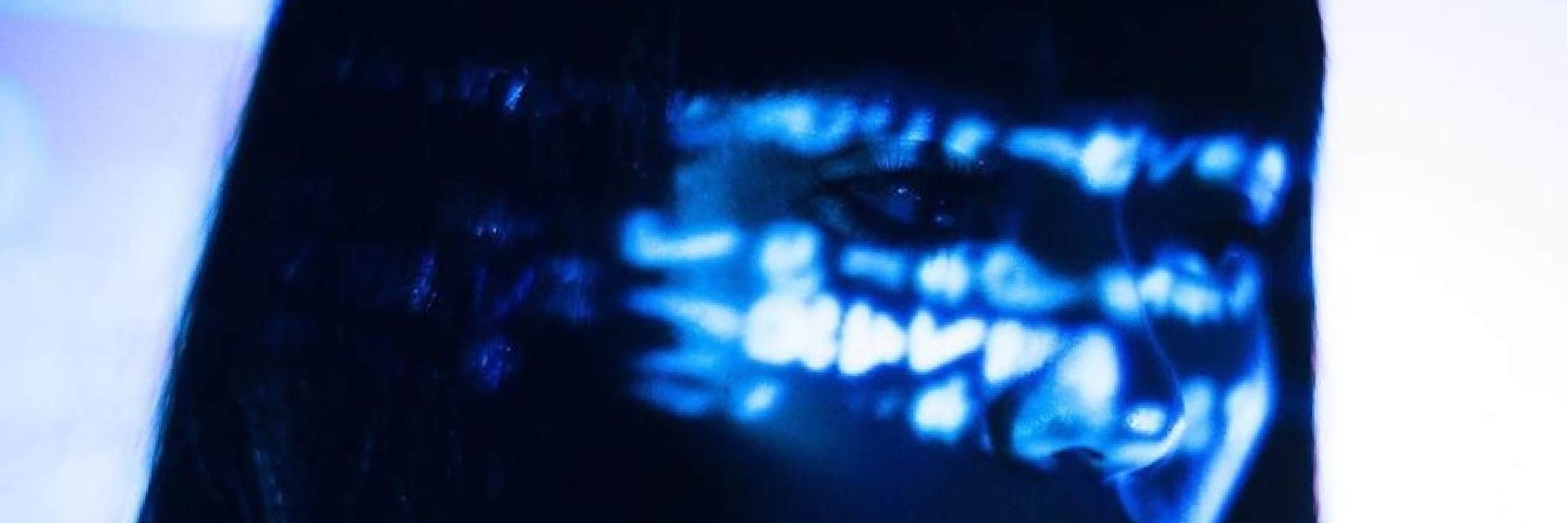
The Modern Lion King Tries to Convince You that Fascism Doesn’t Exist
No One Wanted ThisThe year is 2019. The Lion King live-action remake is in theaters, and I cannot be less excited. I attempt to watch it, only to walk out 40 minutes into the film. Soon, however, I return to the theater, compelled not only by the encouragement of my friend, but also something particularly strange about the remake: Chiwetel Ejiofor’s “Be Prepared. ”In the original animated movie, this musical number is accompanied by what are easily the most whimsical yet menacing visuals in the whole film. Scar rallies the hyenas, convincing them to help him kill Mufasa and Simba. Jeremy Irons’ low, drawling performance as Scar is offset just right by Elton John’s catchy score, setting a uniquely paradoxical tone that is as sinister as it is playful. None of these remarkable highs are present in the remake. The entire sequence is mired in a drab, dark blue palette. The sinister tone of the music is played abysmally straight. Yet, these obvious changes don’t explain my discomfort. There is a glaring absence of something that’s niggling at the back of my mind, but the song breezes by, and I’m forced to carry along. Mufasa is killed by Scar. Simba runs away and hakuna matatas with his adoptive gay parents. His girlfriend Nala finds him and drags him back home, where he kills his uncle and takes his place as the rightful lion king. Nothing of value is added, and everything of value is lost. None of these non-changes have anything to do with what I’m so desperately missing. Only after I exit the theater does it hit me: they cut out the Nazi hyenas. No One is Fascist The essence of what makes the original “Be Prepared” so captivating is the movement of the characters. Animation allows these lions to move in ways that are entertaining and informative: their movements give away who they are as characters. They can even tell you something of the real world, with its intricate social dynamics and political movements. What does this say, then, about the fact that the hyenas are portrayed as saluting, goose-stepping Nazis? The second verse of the “Be Prepared” sequence is rife with what can only be described as Third Reich imagery. The endless procession of hyenas marching along to Scar’s sweeping promises of hyena Lebensraum resembles shots from the 1935 German propaganda film Triumph of the Will. Scar himself is illuminated by a glaring, vertical backlight that evokes the Cathedral of Light, a lighting technique that the Nazis regularly used in their rallies. Nazism was clearly an ideology that the original Lion King, and the American cultural sphere at large, wanted to deem the villain. But the Nazi imagery is gone in the 2019 remake. The live-action hyenas don’t march or salute. There’s hardly enough lighting to constitute a whole Cathedral. It is likely that this removal was deliberate. In the director’s commentary released back in 1994, the creators behind the original Lion King explain that while animating “Be Prepared,” they were concerned about how much they could lean into the “fascism on parade kind of thing. ” One could indeed assert that any form of extreme political imagery, no matter the intent, should have no place in children’s media. But there is no room for argument when it comes to the remake. A remake is an addendum to the original, not its permanent replacement; no amount of embellishment for the new can unmake what was already contained in the old. Disney’s attempt to remove the “problematic” elements of the original achieves effectively nothing. The Nazi imagery in “Be Prepared” is already an undeniable building block of that scene, partly due to how unsubtle it is; there would have been many different avenues to recontextualize this block for a modern audience had Disney not chickened out and removed it entirely, ruining the foundation of the completed sequence. Artistic effects aside, in trying to scrub “Be Prepared” clean of its controversial inspirations, the remake has the opposite effect: it only brings attention to what is missing. The original equates the Third Reich to a starving pack of hyenas led by a cruel, opportunistic usurper, blatantly criticizing Nazism. Then, why should it be so urgent to remove the Nazi imagery, especially when removing it is to the detriment of the entire sequence?The answer is that Disney is a crowd-pleasing coward. Contrary to what the new Lion King may tell you, Nazism was real and alive and on the rise in 2019. According to a study by the Anti-Defamation League, all 50 cases of extremist murder in 2018 were motivated by some type of far-right movement. The high school student Corey Johnson, who shocked the nation in March 2018 by stabbing a 13-year-old to death, was apparently fascinated with Hitler. The school shooter Nikolas Cruz had “numerous images related to Nazis and the Ku Klux Klan” on his cellphone. The Nazis were a bygone threat to the general American public by the 90s, as they were fresh out of Cold War tensions with the USSR. Communism, not Nazism, was public enemy #1. However, historian Kathleen Barlow, who studies the white power movement, speculates that the Trump administration is pulling the Nazis above the surface once more. She explains that having a newly-instated government that tacitly approves far-right movements only facilitates the spread of extremism among the general populace. No One is Evil Without ReasonThe newest film in the modern Lion King saga is Mufasa, released in December 2024. It acts as a prequel to the 2019 Lion King, providing context for why Scar decided to turn against his brother. Scar and Mufasa are not related by blood—instead, Scar is a prince, and Mufasa is his adoptive brother of common birth. Scar is friendly towards Mufasa at first. However, after their pride is attacked by a land-hungry pride called the Outsiders, resulting in his parents’ death, Scar grows resentful of Mufasa and his seemingly innate superiority. His jealousy reaches a boiling point when Mufasa “steals his girl” by dating his crush, Sarabi. Early in the film, Scar convinces Mufasa to act as his wingman. But despite his many attempts to direct her affection towards Scar, Sarabi’s attention never wavers from Mufasa. To Scar’s jealous mind, his brother finally giving in to Sarabi is the ultimate betrayal. The film attempts to humanize Scar by expanding upon his backstory—another recent trend of Disney’s, seen in everything from the live-action Maleficent to Judge Frollo in the musical adaptation of The Hunchback of Notre Dame. This new Scar isn’t “evil for evil’s sake”; instead, he is the tragic prince struggling to meet his father’s lofty expectations, only to fail next to his perfect brother. This reveals where Disney’s sympathies seemingly lie. Right until the moment where Mufasa “betrays” Scar by professing his love for Sarabi, Scar is nothing but helpful and eager; dissatisfied, sure, but nonetheless mature enough to keep it to himself. But his personality does a heel-face turn once he spies on Mufasa making out with his crush. Mufasa’s treachery is apparently so grievous that it causes Scar to discard his prior characterization and ally with the Outsider lions. The scene is treated with a sincere, straight-faced gravitas: the accompanying musical number, “Brother Betrayed,” is a grandiose soliloquy about Scar’s feelings of genuine betrayal, complete with bombastic drums and swelling strings. Frankly, Scar’s complete 180 is likely simply a product of poor pacing. The film, in general, suffers from convenient plot contrivances, especially towards the ending. And it’s not as if “Brother Betrayed” uncritically validates all of Scar’s feelings. The lyrics point out his ridiculous entitlement devoid of any consideration for Sarabi: “I’m next in line, she should be mine!” But the sheer sincerity of “Brother Betrayed” insinuates that Scar’s crashout is an understandable one—not correct, but still understandable. And that is a meaningful difference. Megacorporations such as Disney have a strong incentive to generate sympathy for themselves. The Disney brand markets itself as kind above everything else. It stands for a profitable kind of justice and refrains from any statement that may be even remotely controversial: it pulled a transgender character from its animated series Win or Lose just this February, for instance. Fans speculated that this was to avoid conflict with the reinstated Trump administration. They may very well be correct—Disney has historically sustained itself through its connections with political bodies (see the many US propaganda films that Disney produced in the 40s; ironically, they support the war effort against Nazi Germany). So when considering modern Disney’s propensity for not only reinventing their classics but also actively justifying their villains, it’s interesting to think about what might have motivated this new creative direction. Perhaps Disney wants the audience to believe that anyone, no matter how questionable their actions are, has the potential to be understood and connected with. And if this anyone includes those who murder and take without any regard for others—well, it isn’t right of them to enact territorial genocide, or for them to send thousands of people to die in mines, but the Jihadist terrorists murdered this hero’s brother, and the richest man in the world has his daddy issues to contend with. So surely you can see where they’re coming from, at the very least. No One Cares, but Someone ShouldThe rebooted Lion King series has very little to show for itself, save for its massive profitability and its erasure of Scar’s Hitler-ness. I do not care for the former, but the latter matters greatly in the current social context. In attempting to appease its sensitive audience, Disney obscures the new wave of Nazism from public scrutiny and hides its own tacit involvement. Megaconglomerates such as Disney cannot become as big as they are without appealing to every place under the sun where there is money to be made. Its suppression of queer representation in its newest series speaks for its compliance with the new US administration; its strong business presence in Israel under the guise of political neutrality speaks for far more. We live in a world where creatives are not allowed to say “far-rightism and genocide are bad, actually” without being pelted with tomatoes. In such a world, it becomes the audience’s responsibility to deduce exactly what our favorite media is trying to make us believe.









